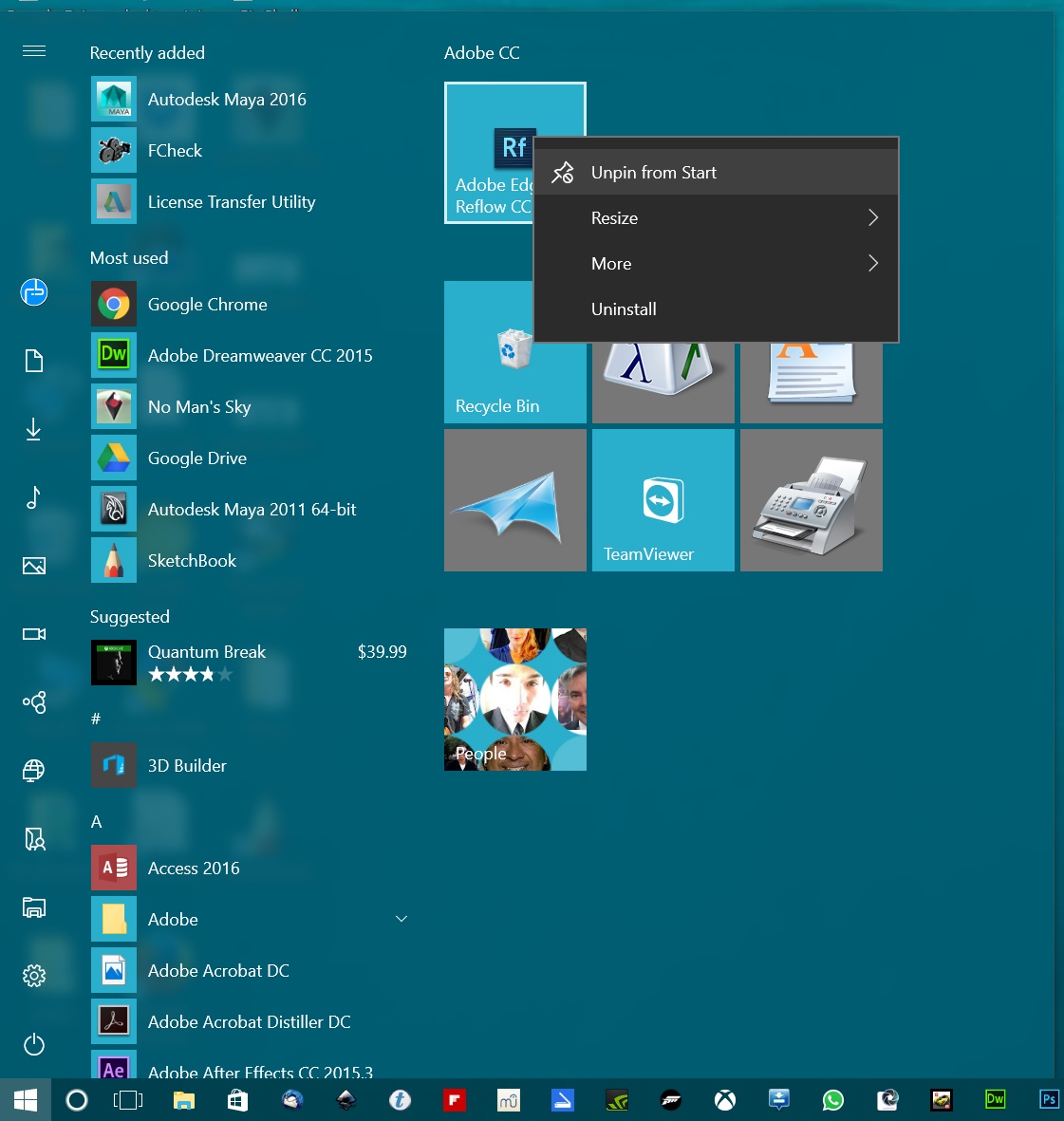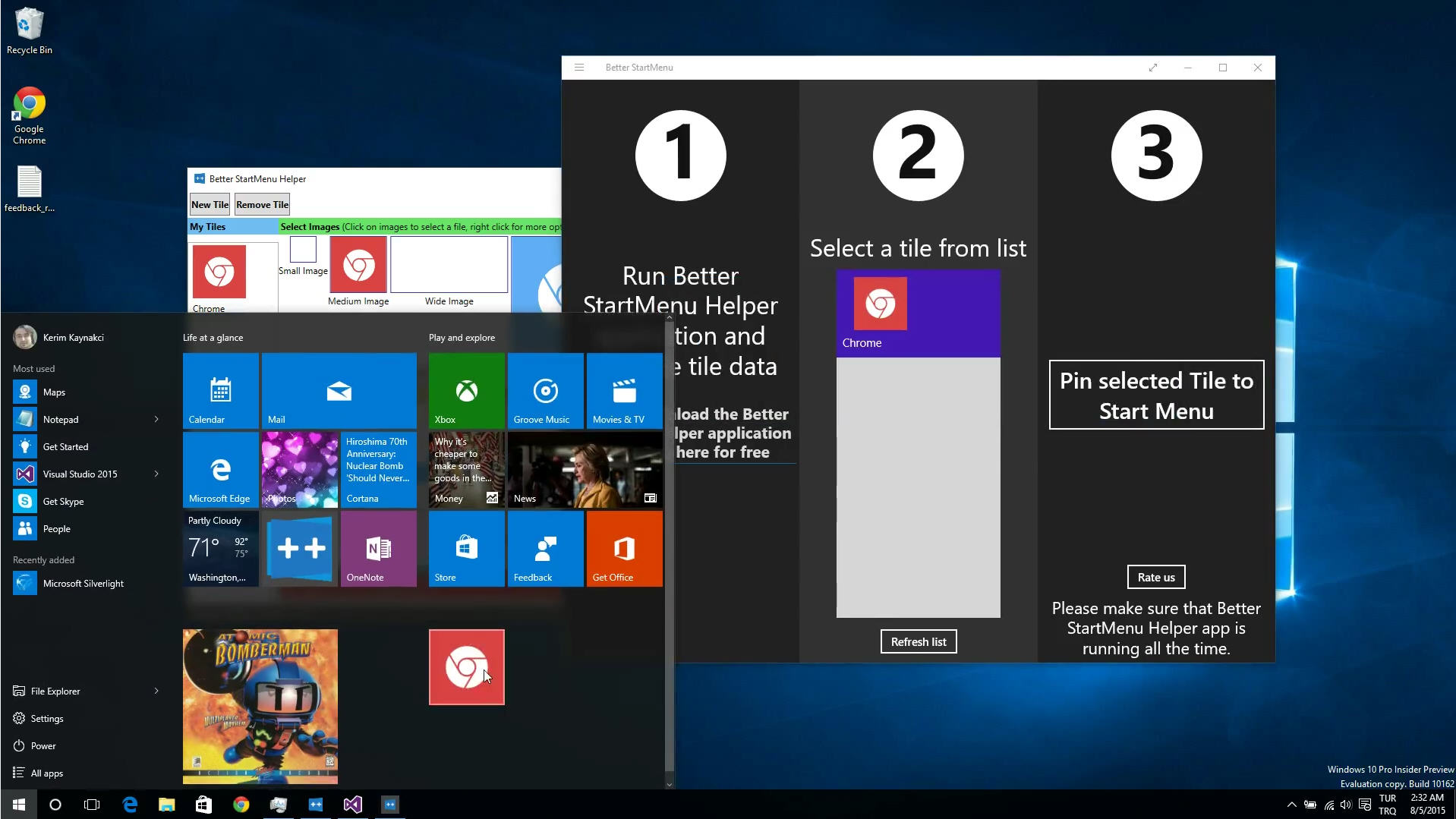

You can control and switch on/off the toggle button in any of the options like "Show app list in Start menu" or "Show recently added apps" or "Show most-used apps." If you want to customize your view, you can open Settings-Personalization-Start. In your Start Menu, you will generally view the most used apps, recently added apps, apps suggested for installation and already installed apps. Step 10 : Manage the Look of your App List in the Start Menu

This feature will stop showing you suggestions when you are using the menu. To the right pane, turn off the "Show suggestions occasionally in Start" option. Open Settings-Click on Personalization-Click on Start Also, when you search for Chrome or Explorer, you get these recommendations of apps along with our results.
#CUSTOMIZE WINDOWS 10 START MENU DOWNLOAD#
Sometimes, Windows suggests you enable or download apps when you are in the app section. Step 9 : Remove Suggestions in Start Menu Additionally, you can choose to name these folders for your convenience. It will keep more than one tile onto these folders. If you wish to keep more tiles on your Start Menu and there is no space for it, you can drag and drop one tile onto the other. If you wish to switch on a live feature of an app, follow the same process to turn it on. Select the More option that opens sub-options.Find the app you wish to disable and right-click on it.If you want to disable them, follow this step. Some apps show live information, such as Live news or weather apps.

Turn on the ones you want to see beaming and turn off the ones you don't want in your Start Menu.

Click on that line and select the folders you want to see on the left pane of the Start Menu. Open-Settings-Personalization-Start-Choose which folders appear in Start. When you check the Start, taskbar, and action center option, the Start menu and the taskbar and action center reflect the new color theme. Under the "Choose your color," use the drop-down menu, choose a color or customize your choice under the custom color option. Step 5 : Give a Colorful Look to the Menu You can also move the tiles from one place to another in the menu by click-drag-release Right-click on the tile and use the Resize option to adjust the size. You can resize the apps/tiles to small, medium, wide, or large. Similarly, if you wish to unpin an app, right-click on the app tile and click on "Unpin from Start." If you wish to pin an app to the Start Menu, search for it on the left side of the menu, right-click on the item and click on "Pin to Start."
#CUSTOMIZE WINDOWS 10 START MENU FULL#
On the right-hand side, enable the option "Use Start full screen." You can choose to enable the Fullscreen of your Start Menu by clicking right on the desktop. Go to Setting-Personalization-Start and turn on the "Show more tiles on Start" option to expand the tile column. Drag the mouse to make the menu look tall or wide. Open the Start Menu and use the Ctrl+arrow keys to adjust the height and width of the menu. You can uninstall any app by right-clicking an app and choosing "UnInstall." Remember, you cannot make any changes to built-in apps. You can check what apps are present from the Start Menu folder. In this step, you can organize the item list in your Start Menu. Step1 : Enable or Disable Apps on the Menu You can finally make the Start Menu your own, declutter the space, make room for apps of your preference, organize and get rid of unwanted apps, change the size or color of the menu or enable the full-screen version. There are default tiles and layouts, of course, but Windows provides the option to customize the Start Menu and change the look and feel of the menu. It must be designed as per the suitability of the users. Start Menu is the gateway to all the applications and files in the computer system. It is refined, has many features compared to its predecessors, and has more control over updating. Windows 10 is the latest operating system released by Microsoft. Microsoft has many beneficial tools, like the MS Office suite wherein Excel can help you create accessible documents, pivot tables, etc.


 0 kommentar(er)
0 kommentar(er)
